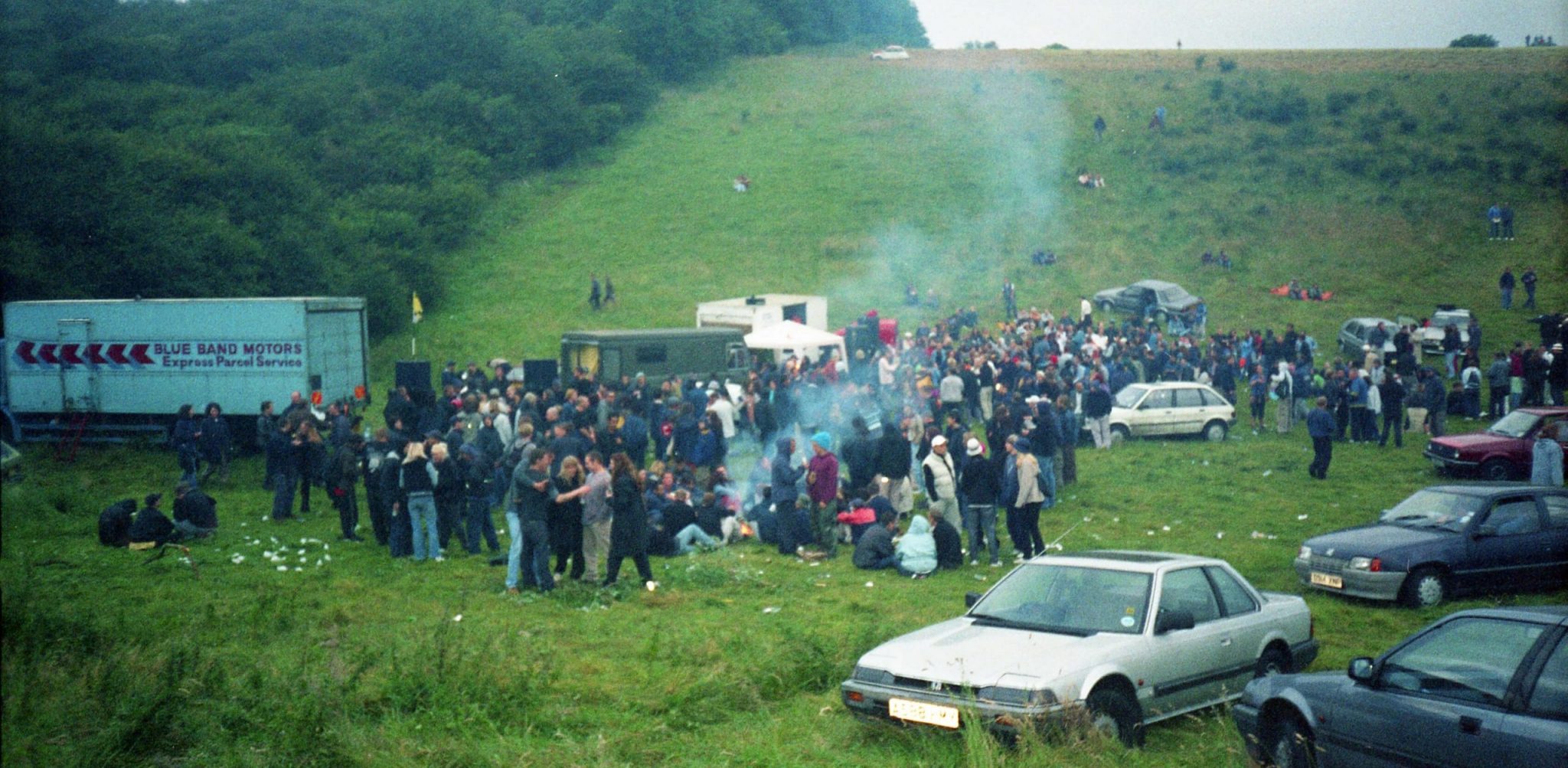As raves return to the fields of Britain, a new book looks back to the days of the travelling sound system
Last week a Twitter user named Liv huffily wrote, ‘Leeds rave last night about 3am. Spice zombies flooded the M1.’ Appearing alongside the post was a video, shot from a car caught in traffic, of a reveller in tiny shorts and a vest top (who may or may not have been on the drug spice) voguing down the hard shoulder of the motorway. Liv may not have been old enough to have witnessed the first flourishing of Britain’s underground rave scene, heralded by the so-called Second Summer of Love, in 1988, and largely killed off by the Criminal Justice and Public Order Act 1994 (which strengthened stop-and-search powers, criminalised trespass and, most famously, barred unlicensed gatherings of 20 or more people at which music that ‘includes sounds wholly or predominantly characterised by the emission of a succession of repetitive beats’ was played). If she had been, she might have found the scene in Leeds a nostalgic one. With nightclubs in Britain closed indefinitely due to the pandemic, and bars only now being permitted to reopen, police have reported the return of the illegal rave, from Merseyside to Bristol, the Isle of Sheppey to London’s own parklands.
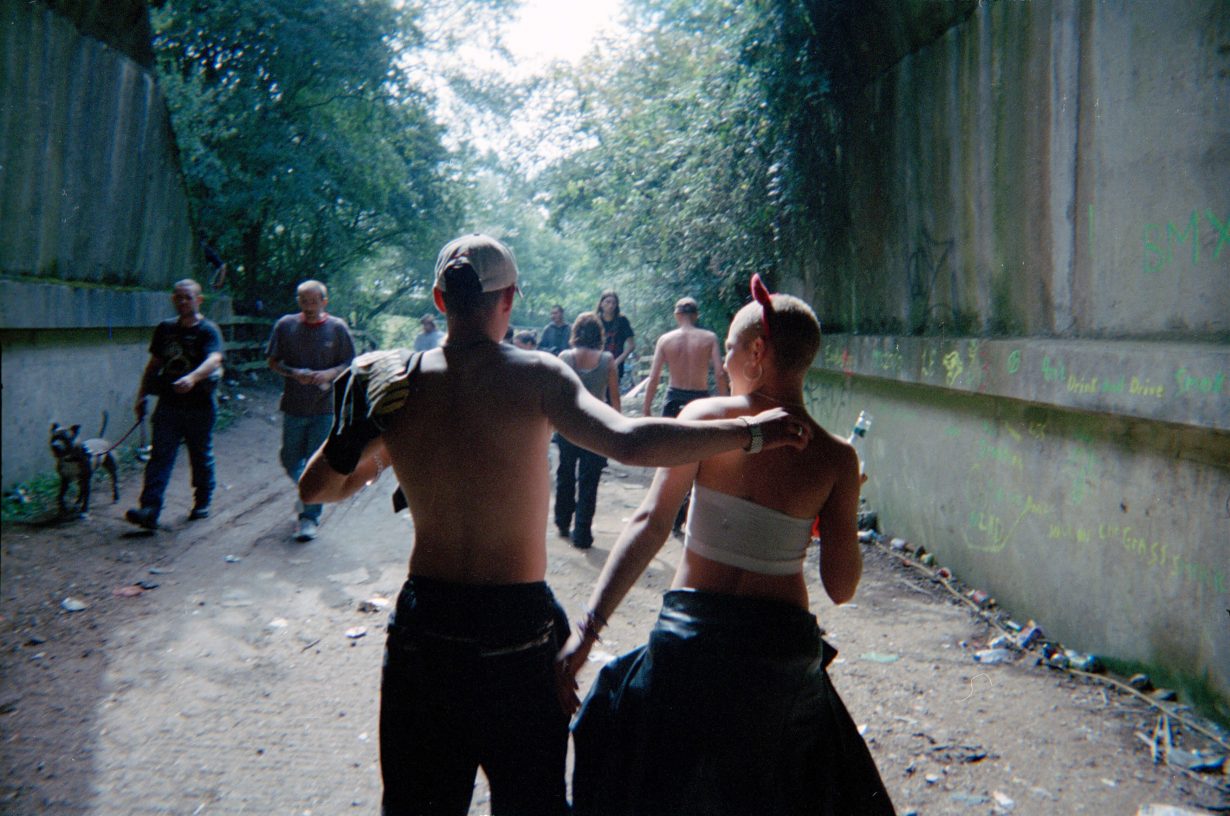

The historic rave scene was a much bigger affair, characterised by travelling sound systems that would rock up in fields or wastelands and set up for several nights of partying, advertised through word-of-mouth or paper flyers. Among those dancing in the sweaty throngs was artist Seana Gavin. There’s a self-portrait of her in a new monograph of her photographs pictured in 1995 at Mother festival in Lincoln: with closely cropped hair, bomber jacket, big sunglasses offering protection from the effects of the night before, she sits in morning-after sunlight, a camper van and cars parked up behind her in a field of long grass. In her introduction Gavin notes that she first got into the free party scene while searching for after-hours entertainment on a night out in London, eventually stumbling into the Spiral Tribe party in the west of the city. ‘I danced non-stop all night and interacted with everyone in the room, passing around water to the sweating ravers… I became hooked, and my life started to revolve around this weekly ritual.’

Gavin came to these parties relatively late in their development (though she herself was young, in her mid-teens), with the British state taking an increasingly authoritarian approach to snuffing them out. She began to travel with party convoys, particularly the Spiral Tribe sound system, sometimes for weeks at a time, as they sought out new pastures on the Continent, where there was less kickback from authorities. The earliest of the photographs included here were taken in the mid-1990s, and the collection stretches into the early 2000s, documenting road trips around France, Spain, Italy, Holland, Czech Republic, Slovakia, Germany and Hungary. The pictures are interspersed with contemporary diary entries telling of run-ins with the police and border officials, accounts of the carnage and come-downs, and Gavin’s collection of flyers and notes from what were obviously heady days. There has been plenty of historicising of rave culture (most notably by artists Mark Leckey and Jeremy Deller), but often concentrating on its early British period. Spiralled is a social document of the later scene as it mutated beyond the M25, meeting continental anarchism and the influence of European post-Cold War techno culture.
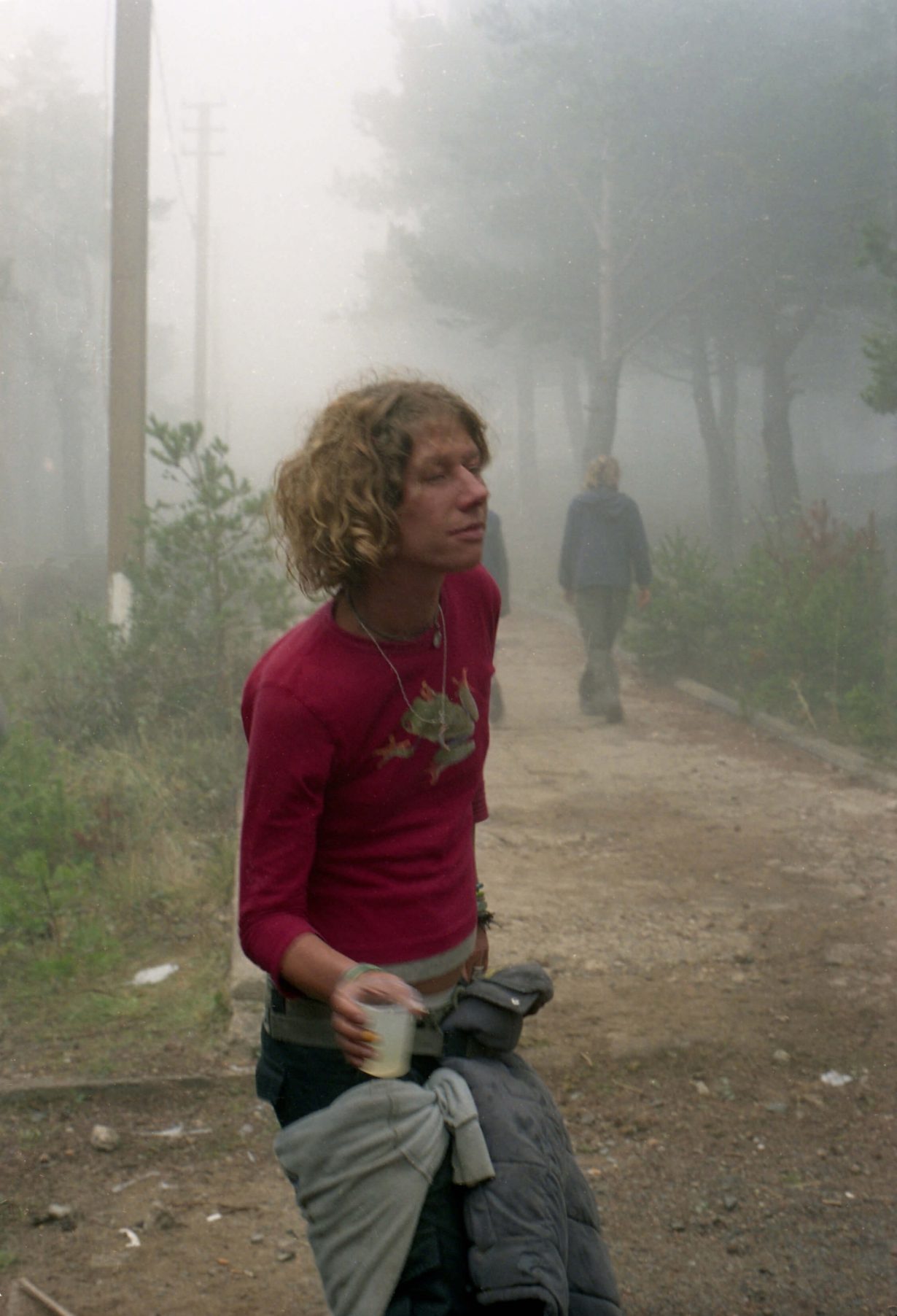
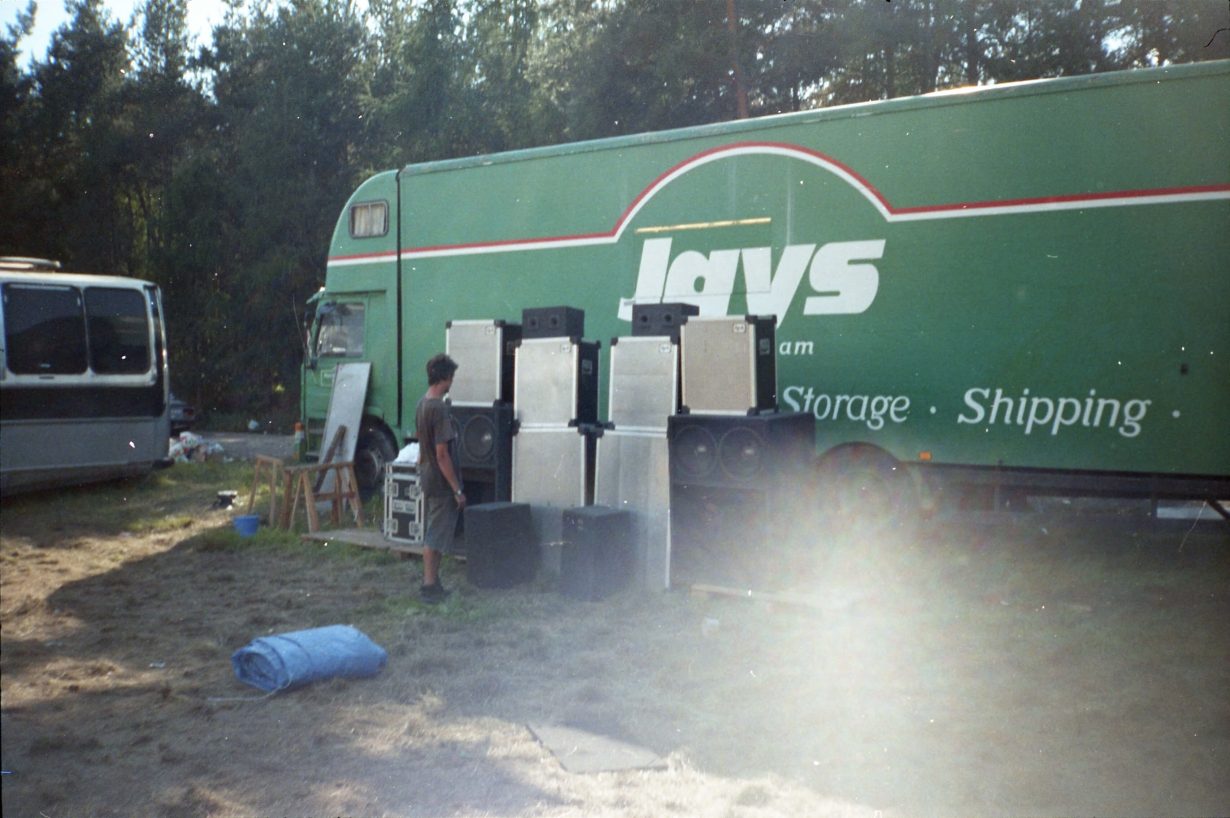
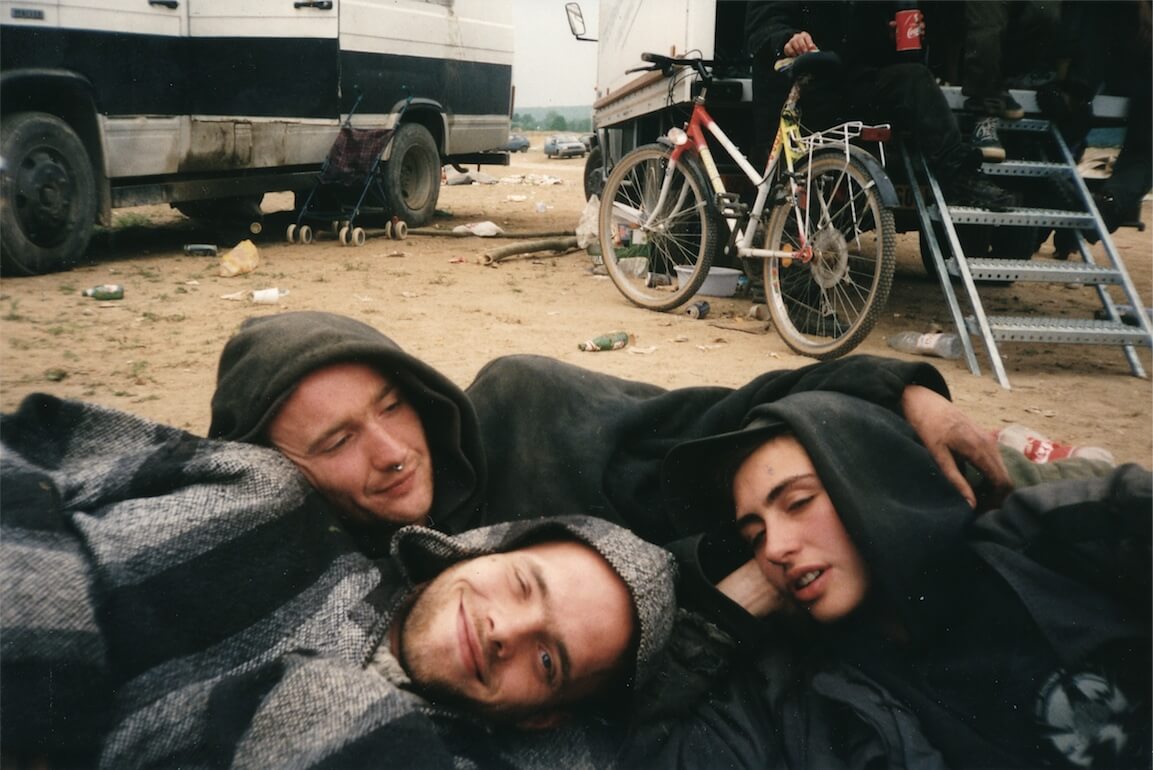
Of course, a project such as this runs the risks of becoming tedious in the manner of someone relaying anecdotes of drug escapades you weren’t party to, but Gavin’s photographs are genuinely endearing. And there is also formal merit to them: even in the chaos (and, by her own admission, under the influence of all sorts of fun stuff), Gavin managed to produce impressively composed photographs. An image of a friend dressed in blue, her foot inexplicably in a white bucket, at the Rotterdam Teknival party in 1996, for example, is framed by a blue horizontal stripe running along the side of a white caravan and vertically striped blue-and-white sofa cushions the friend rests on. A brown dog to the right of the subject breaks up any preciousness in the palette and framing. The analogue film is grainy but picks out the brightest flashes of colour: the dull hues in a wide angle image of a Spanish warehouse party in the early morning light of New Year’s Day 2001 are set off by the flash of red of one man’s coat. The artist too has sensibly eschewed a chronological ordering in favour of taxonomical pairings: crowd scenes, picnic scenes, warehouse scenes and scenes of the trucks that carried the technical equipment are grouped over spreads. Two photographs taken in France in 1999 show people passed out at the same event (the subject of the second picture can be seen in the background of the first). In the first, which Gavin has titled Heaven, a man sleeps comfortably on the ground bathed in sunlight. In the second picture, Hell, the second man lies with his head at an uncomfortable angle against a rock. They sum up both the euphoria of these events, and the discomfort, dirt and dangers.
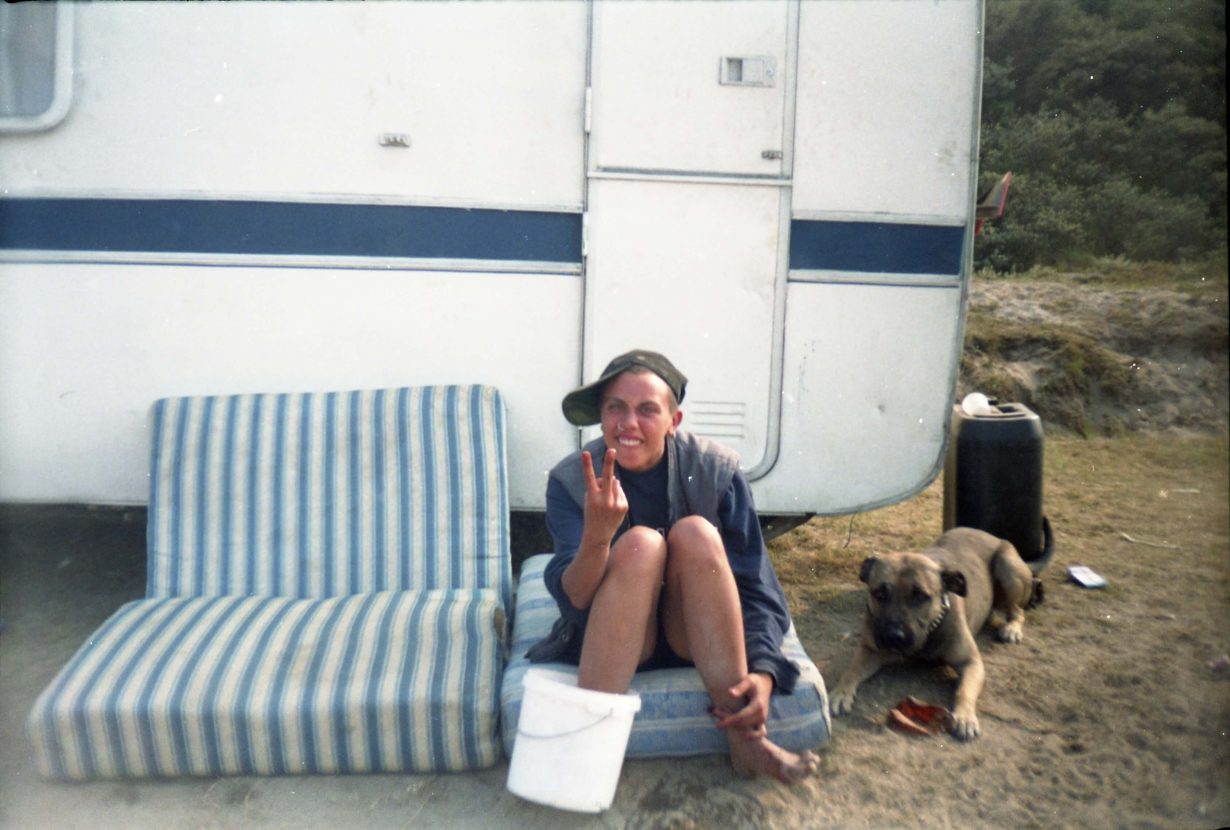
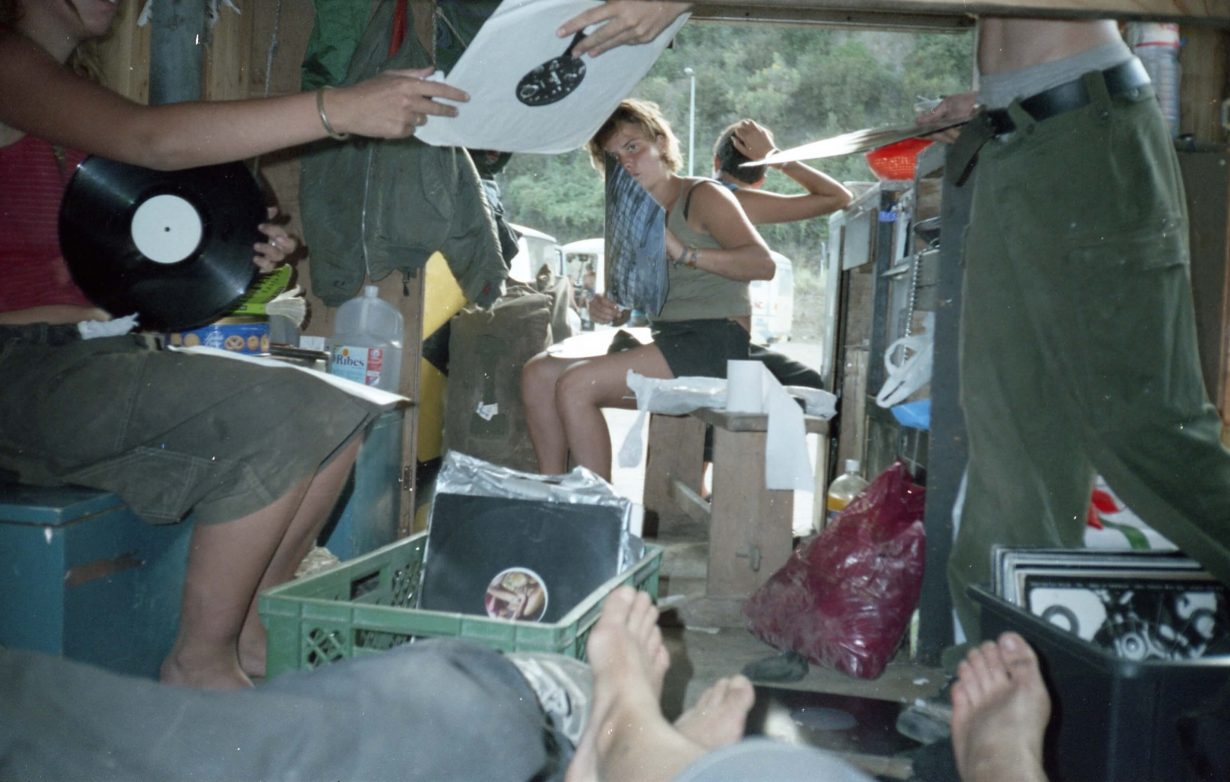


The book is Gavin’s personal, contemporaneous account and contains none of the later theorising that has been focused on the era. What we do see is the messy human reality, in all its gore and ebullient glory, of the Temporary Autonomous Zones described by anarchist writer and poet Hakim Bey. Gavin’s photographs conjure up tight units of people created by the parties – a society outside society – as well as the delineated temporary spaces Bey described, whether warehouses or fields, that exist outside the formal structures of control. The images are nostalgic, not just because they represent youthful fun or dated fashions, but because they depict a freedom largely lost even outside the confines of the pandemic, as laws have been tightened and capitalism has devoured the life from such communal activities.
Spiralled, by Seana Gavin, is published by Idea, in an edition of 750
